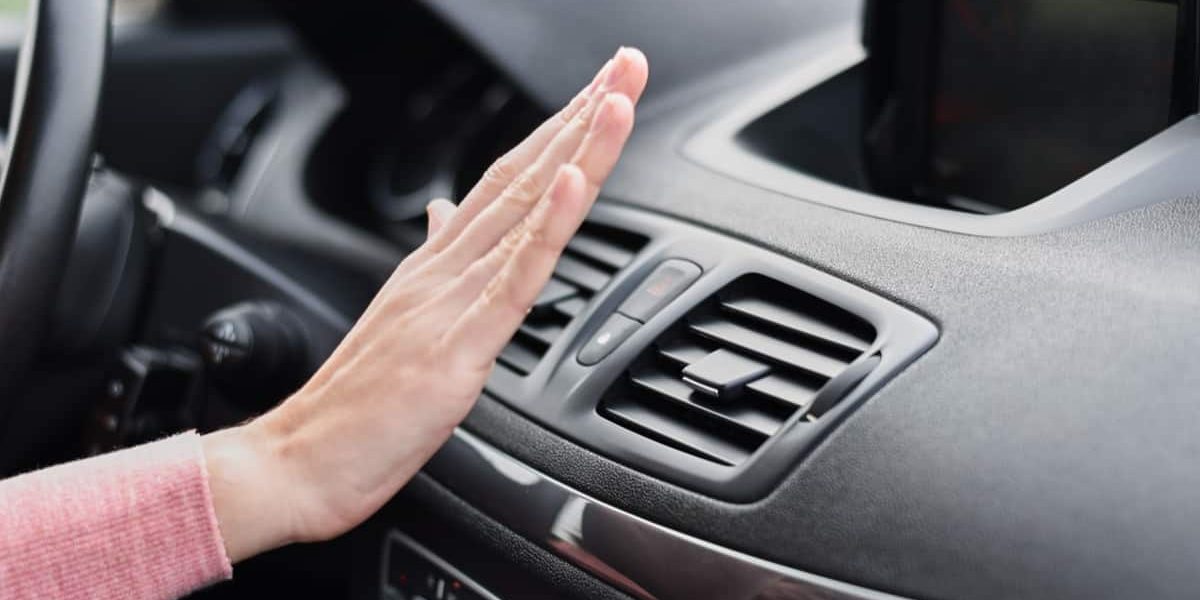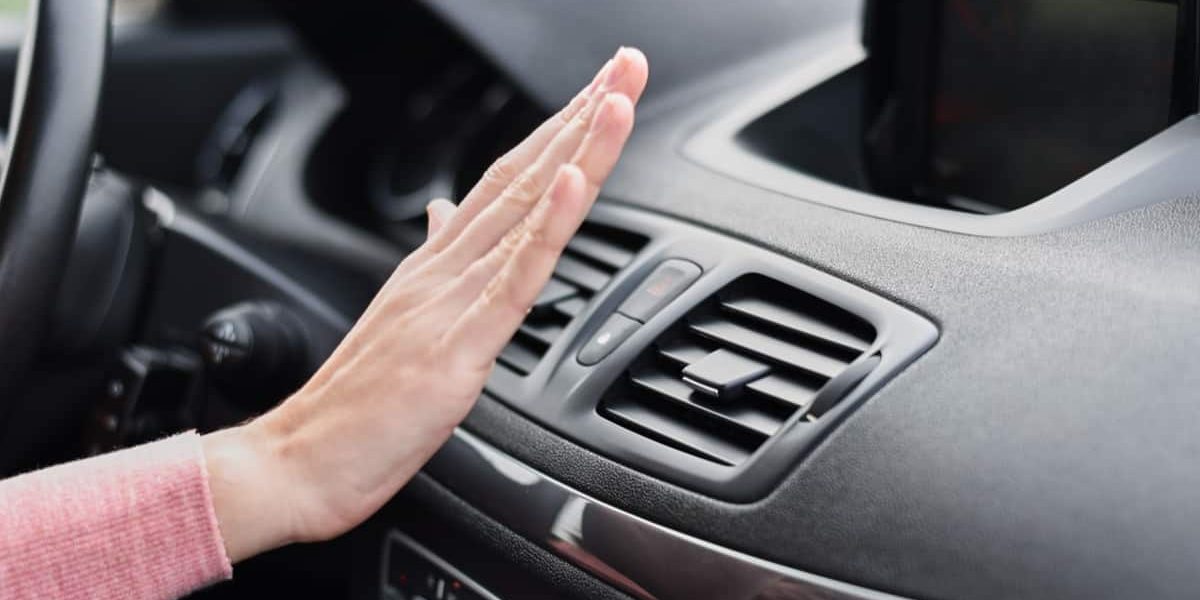Why Is My Car Heater Blowing Cold Air


Common Causes of Car Heater Blowing Cold Air
To understand why your car’s heater might be blowing cold air, let’s look at the common causes. A low coolant level, a malfunctioning thermostat, a clogged heater core, and a broken or malfunctioning heater control valve could all be the culprits. In this section, we will explore each of these sub-sections in turn, so you can diagnose and fix the issue with your car’s heater.
Low Coolant Level
The level of cooling fluid in your car is an essential requirement for maintaining the temperature inside your vehicle. A diminished amount of fluid can lead to issues with the air conditioning system. When there isn’t enough coolant, your car’s heating system might struggle to warm up since it requires fluid to transfer heat from your engine. Insufficient amounts of cooling fluid can cause other vehicle problems as well.
Ensure that you have sufficient levels of coolant by checking the reservoir regularly and topping it up if necessary. In addition, inspect the hoses and radiator for leaks that may result in a decrease in fluid volume. It is important to maintain proper levels of coolant flow in your car to prevent issues arising from low coolant levels, such as cold air blowing out from the heater.
To avoid compromising your vehicle’s functioning, be sure to take immediate action when a low level of coolant is detected. The engine could overheat due to a lack of cooling liquid, which might cause serious harm or even result in a breakdown if left unnoticed. Therefore, it is always advised to monitor the airflow conditions inside your automobile and seek professional assistance if needed.
There was once an automobile owner who discovered that their heating system was distributing cold air despite low outdoor temperatures. They sought advice from several qualified professionals, who all confirmed low coolant levels were responsible for their issue until they topped up their coolant and resolved this issue.
Malfunctioning Thermostat
When the temperature control in your car is not working correctly, it can be due to a failing thermostat. The thermostat regulates the engine’s operating temperature, which, in turn, affects the heater’s performance. If the thermostat gets stuck in the closed position, it prevents coolant from flowing through the engine, causing cold air to blow out of the heater.
A malfunctioning thermostat is a common cause of cold air blowing from your car’s vents. When it becomes faulty, it can either become stuck open or shut. If it gets stuck open, your car will take longer to warm up than usual and might not reach its optimal operating temperature. On the other hand, if it gets stuck shut, you’ll experience no heat at all.
If a malfunctioning thermostat isn’t fixed promptly, several problems could arise. These include damage to the radiator and head gasket, or even total engine failure. Therefore, it is essential to maintain your vehicle’s cooling system regularly.
Once, I faced a similar issue where my car’s heater was blowing cold air even when I turned up the heat. It turned out that the problem was with my car’s thermostat. By replacing it with a new one and getting regular maintenance checks performed on my vehicle’s cooling system, I was able to prevent this from happening again in the future.
Clogged Heater Core
One possible semantic NLP variation of the heading ‘Clogged Heater Core‘ could be ‘Restricted Airflow through the Heating Coils.’ This issue occurs when the heating coils inside the vehicle’s heating system become clogged or blocked by debris, preventing warm air from being circulated into the car. This type of problem can arise due to several reasons, such as a dirty or worn-out filter, mould growth, or a malfunctioning blower motor. If left untreated, it may lead to reduced efficiency and potential damage to other parts of the system. Regular maintenance is essential to prevent this from happening.
To address this issue and restore proper airflow through the heating coils, a mechanic needs to inspect and clean out the coils using specialised equipment. Alternatively, if the damage is severe, replacing the coils might be necessary. It is crucial not to ignore any early signs of poor heating performance, like cold air blowing instead of warm air.
A common sign that restricted airflow may be causing your heater issues is unpleasant smells coming from your car’s vents. Often, you’ll smell mildew or dust when they have started building up in pipes with inadequate drainage systems. In some instances, a delayed engine thermostat opening and closing cycle could be responsible for restricting hot coolant flow and reducing heat output.
A friend once complained bitterly about his car heater blowing cold air during the winter months while his defrost system couldn’t clear off his dashboard, resulting in very low visibility while he drove home daily from work. These circumstances made driving more dangerous than usual while also forcing him to constantly shake off frost from his windshield manually before hitting the road again each day until he got it fixed at a garage shop.
In summary, whenever there’s restricted airflow through your car’s heating coils, it’ll cause problems with warm air circulation, leading to an uncomfortable ride during the winter and posing risks on slippery roads without adequate sight lines. Therefore, always get checked annually to avoid any eventualities associated with such issues.
A Broken or Malfunctioning Heater Control Valve
The malfunctioning of the valve regulating the flow of hot coolant liquid to the car heater core causes cold air in a vehicle’s cabin.
- The faulty valve often fails and starts leaking or rupturing, causing warm air inside the engine bay.
- The coolant continuously flows through the radiator due to a stuck-open valve, preventing proper heat transfer.
- A broken seal or debris can obstruct the valve, leading to inadequate control over fluid movement and resulting in no heating effect in car cabins.
- A damaged temperature blend door actuator could also cause similar symptoms, like faulty heater control valves.
- The passenger compartment airflow system could fail, causing a reduced amount of hot coolant to circulate through the core, leading to an insufficient heating effect inside the car cabin.
- In rare cases, incorrect wiring may lead to malfunctioning heater control valves.
It implies that finding out exactly ‘what’ went wrong might require professional assistance, as failure of multiple components results in common symptoms.
Pro Tip: Heating systems require regular maintenance with periodic inspection by trustworthy mechanics. Make sure your car isn’t leaving a trail of tears and coolant behind with this simple leak check.
Checking for Coolant Leaks
To check for coolant leaks in your car heater that are blowing cold air, we suggest identifying the leak and repairing it. By using these sub-sections as solutions, you can quickly diagnose and fix any leaks within your coolant system. This will improve the efficiency of your car heater and keep you warm all winter.
Identifying the Leak
Detecting the Source of Coolant Leakage for Vehicles
Locating the origin of a coolant leak is critical to preserving and prolonging the lifespan of your vehicle. Low coolant levels can result in overly hot engines or even engine failure. Several steps need to be taken to identify the area where fluid is leaking.
- Begin by investigating under your car.
- Check for leaks coming from beneath the radiator.
- Inspect coolant hoses and connections for any noticeable signs of damage.
- Look closely at engine gaskets, as these are common sites for fluid seepage.
- Use a pressure testing tool to check for cracks or faults in the radiator cap.
It’s also crucial to confirm if you’ve recently replaced any parts before proceeding with detecting the leak. Ideally, regular maintenance checks and quality assurance procedures should be undertaken by an experienced mechanic.
As you begin to investigate possible reasons why your vehicle’s dropping without specific reasons, it is vital first to determine which type of coolant substance is lost, whether blue or green fluid, before locating potential fluid leaks.
Repairing the Leak
After identifying the leak, promptly stopping it is crucial to avoid engine damage or a breakdown. Here’s a 6-step guide for stopping a coolant leak:
- Turn off the engine and let the vehicle cool down completely.
- Locate the source of the leak and remove any obstructions or debris around it.
- Clean the area surrounding the leak using a degreaser or brake cleaner, then dry it.
- Apply a high-quality coolant system sealant according to the instructions on its label.
- Start your engine and let it run for an hour before turning it off again.
- Check if the leak has stopped. If not, repeat steps 4 and 5 before seeking professional assistance.
Remember that different leaks require specific solutions depending on their severity or location. Seek guidance from your mechanic if necessary.
One unique detail worth mentioning is that some car models have plastic parts in their cooling systems that are more prone to wear, tear, and cracking over time.
According to CarFax, “Coolant leaks are one of the most common reasons drivers visit repair shops.”
Checking the Thermostat
To check the thermostat in your car heater and resolve the issue of cold air blowing, you need to look out for signs of a malfunctioning thermostat. If you observe these symptoms, you may need to replace the thermostat.
Signs of a Malfunctioning Thermostat
A properly functioning thermostat is essential for maintaining the temperature within your home or office. It’s important to keep an eye out for signs of a malfunctioning thermostat to avoid discomfort as well as potential costs of energy waste and damage.
Some signs of a malfunctioning thermostat include the following:
- Inconsistent Temperature Control: This can be caused by a faulty sensor or inaccurate readings, leading to hot or cold spots throughout the space.
- Unusual Sounds Coming From the Unit: If you hear clicking or buzzing sounds, it might indicate loose wiring or electrical issues that require professional attention.
- Constant Cycling On and Off: The repeated starting and stopping of the heating and cooling system can waste a lot of energy and cause unnecessary wear and tear on the equipment.
If you notice any of these signs, it’s essential to take immediate action. Besides this, be mindful if you have pets who may tamper with your thermostat settings. Moreover, malfunctioning thermostats may be caused by underlying issues such as dirty filters or damaged ductwork.
To avoid further problems with your heating and cooling system, you can try adjusting its placement, such as by moving it away from direct sunlight, cleaning up any debris around it regularly, or consulting a professional HVAC technician for repairs. Maintaining a healthy thermostat function ensures comfort levels while saving energy and preventing damage to your property.
Replacing the Thermostat
When it comes to thermostat replacement, knowing the proper steps is essential. To ensure a successful replacement, follow these six guidelines:
- Turn off the power to the furnace or air conditioner.
- Remove the old thermostat cover.
- Disconnect the wires from the old thermostat.
- Connect wires to the new thermostat according to its manual.
- Turn on the power and test the new thermostat.
- Mount the new thermostat and replace its cover.
It’s vital to buy a compatible thermostat and make sure you understand how to use it before beginning installation. Following these guidelines not only replaces your thermostat but also ensures an efficient system.
One of the crucial aspects of replacing a thermostat is taking safety precautions. Remember to turn off the power to prevent electrocution before beginning installation. When testing your new device, wait until it reads accurately before making additional adjustments.
To keep your HVAC system running efficiently, consider investing in a programmable smart thermostat that can automatically adjust settings based on occupancy and temperature preferences. Additionally, cleaning your HVAC filters at least once every three months will reduce stress on your unit and save money on energy bills.
Note: Flushing the Heater Core: Because no one wants their car to be colder than their ex’s heart.
Flushing the Heater Core
To flush the heater core in the “Why is my car heater blowing cold air” article, look out for signs of a clogged heater core and flush the heater core accordingly. This section will help you understand the importance of flushing the heater core, along with the sub-sections explaining the signs of a clogged heater core and how to flush the heater core.
Signs of a Clogged Heater Core
Have you noticed your car heater blowing cold air or experiencing reduced airflow? It may be a signal of a clogged heater core. Below are some signs that indicate the same.
- Insufficient Heating: The most apparent sign of a clogged heater core is inadequate heating. If the blower motor is functioning fine but the air does not heat up, it’s likely your heater core is clogged.
- Weird Smell: A musty smell emanating from the heater vents may point towards a clogged heater core. This odour results from condensed water sitting in the core when coolant can’t flow through it due to blockage.
- Foggy Windshield: A faulty heater core could also result in foggy windows as warmed air from the engine compartment can’t reach you due to restrictions in circulation.
If you continue ignoring these warning signs, you may damage your car engine and decrease fuel efficiency, leading to hefty bills and an increased carbon footprint. Therefore, timely maintenance is crucial and could save you from costly repair work.
How to Flush the Heater Core
Flushing the heater core is a crucial maintenance task that saves you from facing expensive repairs and ensures your vehicle’s efficient heating system. Look below to learn the simple yet effective steps to correctly flush the heater core:
- Locate the heater core – It is often seen under the dashboard or near the firewall.
- Disconnect hoses – Disconnect both ends of hoses connected to the heater core.
- Flush it out – Use a hosepipe and forcefully flush water through one end of the heater core till it comes out clean from the other end.
- Reverse flow – Use another pipe to flush water in the opposite direction.
- Reconnect hoses – Reconnect both ends of hoses and securely tighten clamps.
It is advisable to opt for this process every few years as it helps remove debris buildup, improve airflow, and prolong its lifespan.
Additionally, use only recommended coolant types that are compatible with your vehicle’s make and model, as incompatible coolants can cause clogging in heater cores, resulting in costly replacements. Regularly cleaning air filters prevents dirt accumulation on evaporator coil surfaces, further saving you from unwanted repair expenses.
Inspecting the Heater Control Valve
To inspect the heater control valve in your car and address the issue of cold air, identifying a broken heater control valve and replacing it are crucial steps. In this part, we’ll briefly introduce the two sub-sections that focus on these solutions.
Identifying a Broken Heater Control Valve
Spotting Signs of a Faulty Heater Control Valve
To detect a broken heater control valve, there are several signs to look out for:
- If the air from the heating system is only mildly warm or not as hot as it should be, then it could indicate a faulty valve.
- Any leaking coolant could suggest that the valve seals have worn out over time and need to be replaced.
- Lastly, if the heater control valve is stuck shut or open, then this can also cause issues with overheating or a lack of heating in the vehicle.
To ensure the efficiency of your vehicle’s heating system, inspecting the heater control valve is essential. Start by checking for any leaks or cracks on its body and hoses. Next, examine the valve’s movement when adjusting it from hot to cold, making sure it moves smoothly without any restrictions or noises. Finally, test the temperature output of your heating system to see if it reaches optimal levels.
If you notice any irregularities during the inspection, replacing the heater control valve can be an effective solution. Regular maintenance and replacement of worn-out parts can help prevent costly repairs down the line. Additionally, cleaning and flushing your cooling system annually can extend the lifespan of your heater control valve and keep your entire vehicle in top condition.
Replacing the Heater Control Valve
When dealing with your vehicle’s heating system, it may be necessary to address issues with the heater control valve. To handle this task, follow these three simple steps:
- Locate the current control valve and remove it from its position on the heater hoses.
- Install the new control valve in place of the old one, ensuring that all connections are secure and properly tightened.
- Test your new heater control valve to confirm that it is functioning correctly before moving forward.
In addition to following these steps, it is important to note that replacing your vehicle’s heater control valve may vary depending on the make and model of your car. It would also be beneficial for you to consult an expert to avoid causing any further damage.
Pro Tip: Always refer to your owner’s manual or seek expert advice when attempting maintenance tasks on your vehicle’s heating system.
Why Is My Car Heater Blowing Cold Air – Conclusion
The possible reasons why your car heater is blowing cold air could be linked to a thermostat malfunction, a low coolant level, or a clogged heater core. It is recommended to check the thermostat and coolant levels and ensure proper circulation of heat. To prevent future issues, regular maintenance of your car’s heating system can help avoid costly repairs.
Why Is My Car Heater Blowing Cold Air – Frequently Asked Questions
Q: Why is my car heater blowing cold air?
A: There are several possible reasons for your car heater blowing cold air, including low coolant levels, a malfunctioning thermostat, a clogged heater core, or a faulty water pump.
Q: How does low coolant affect my car heater?
A: Coolant, also known as antifreeze, is responsible for keeping the engine and heater core at a consistent temperature. Low coolant levels can cause the heater to blow cold air because there is not enough hot coolant to circulate through the core and create heat.
Q: Can a malfunctioning thermostat cause my car heater to blow cold air?
A: Yes, a thermostat that is stuck open or closed can affect the temperature of the engine and the effectiveness of the heater. When the thermostat doesn’t work properly, the engine may overheat or the heater may blow cold air.
Q: How can I tell if my car’s heater core is clogged?
A: A clogged heater core may cause reduced heat or no heat from the car’s heater. You may also notice a sweet smell from the vents or a buildup of condensation inside the car.
Q: What is a water pump, and how can it affect my car’s heater?
A: The water pump circulates coolant throughout the engine and heater core. If the pump fails, there may not be enough coolant circulating to produce heat in the heater core, resulting in cold air blowing from the heater.
Q: Can a dirty air filter affect my car’s heater?
A: A dirty air filter can limit airflow to the heater core, resulting in reduced heat or no heat from the car’s heater. Regularly replacing the air filter can prevent this problem.










